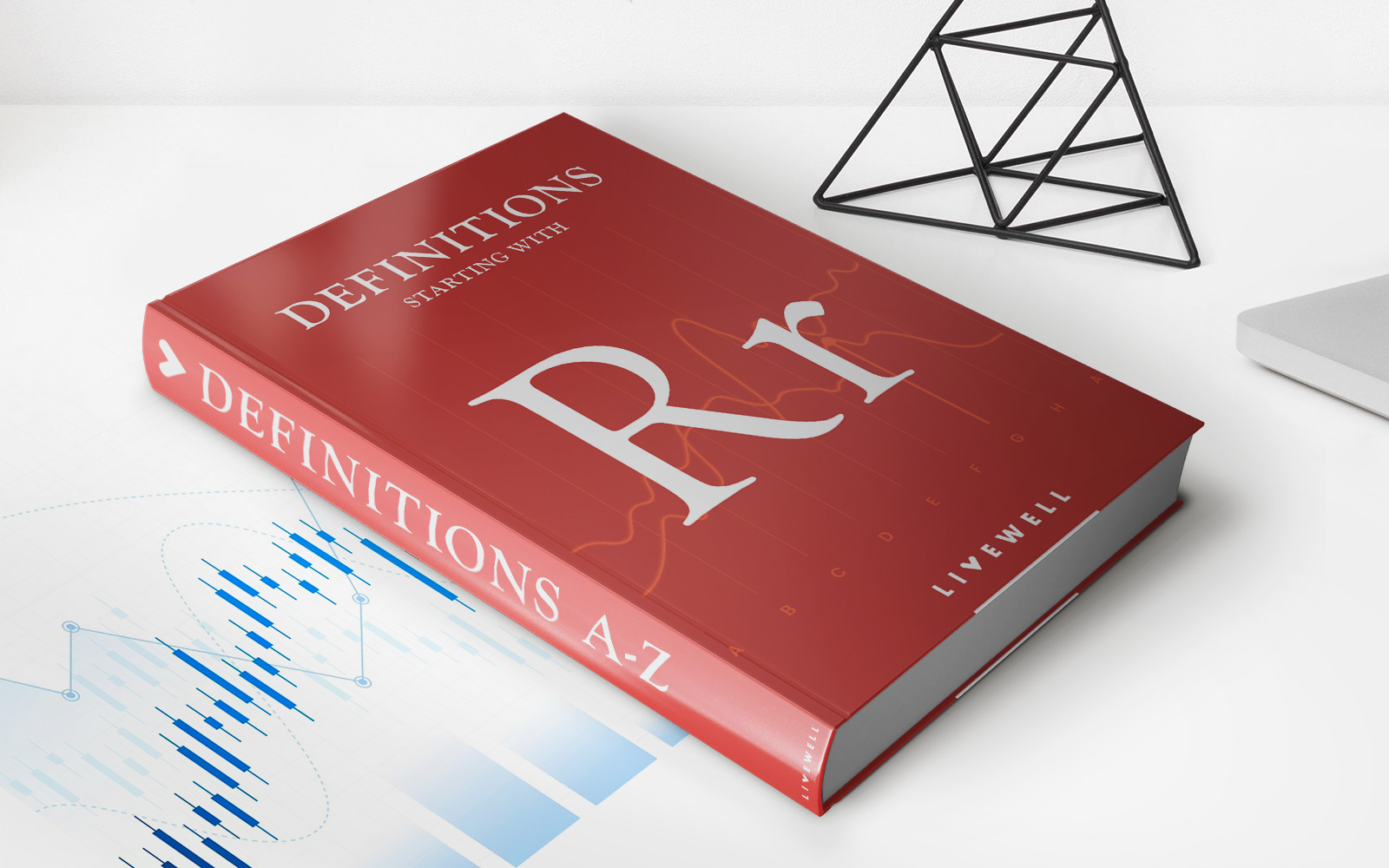

Finance
What Happens To Pension When You Leave Job
Published: November 27, 2023
Wondering what happens to your pension when you leave your job? Get expert insight and advice on managing your finances during job transitions and securing your pension.
(Many of the links in this article redirect to a specific reviewed product. Your purchase of these products through affiliate links helps to generate commission for LiveWell, at no extra cost. Learn more)
Table of Contents
- Introduction
- Understanding Pensions
- Types of Pensions
- Pension Vesting
- What Happens to Your Pension When You Leave a Job?
- Options for Your Pension When You Leave a Job
- Taking a Lump Sum Payment
- Rolling Over Your Pension
- Transferring Your Pension to a New Employer
- Leaving Your Pension with Your Previous Employer
- Factors to Consider When Deciding What to Do with Your Pension
- Tax Implications of Various Pension Options
- Final Thoughts
Introduction
Pensions are an essential component of retirement planning. They provide a steady stream of income during the later years of life when individuals are no longer actively working. However, circumstances can change, and people may find themselves leaving a job before they reach retirement age. This raises the question: What happens to your pension when you leave a job?
Understanding how pensions work and what options are available to you can help you make informed decisions about your retirement savings. In this article, we will explore the different types of pensions, the concept of pension vesting, and what happens to your pension when you leave a job. We will also discuss various options you have for managing your pension, including taking a lump sum payment, rolling over your pension, transferring it to a new employer, or leaving it with your previous employer.
It is crucial to consider multiple factors, such as the amount of your pension, your current financial situation, your future retirement goals, and any tax implications when deciding what to do with your pension. By being well-informed, you can make choices that align with your financial needs and objectives.
Before we delve into the details, let’s start by understanding the basics of pensions and how they function.
Understanding Pensions
Pensions are retirement savings plans that employers offer to their employees as a form of long-term financial security. They are designed to provide a steady income during retirement, supplementing any Social Security or personal savings individuals may have.
Pensions work by accumulating funds over the course of an employee’s working years. The contributions made by both the employee and employer are invested in various assets, such as stocks, bonds, and mutual funds, to grow the pension fund’s value over time.
One unique feature of pensions is that they are typically defined benefit plans. This means that the amount of income an employee receives during retirement is predetermined based on factors such as salary, years of service, and a formula set by the pension plan. Unlike a defined contribution plan, such as a 401(k) or IRA, where the retirement income depends on the performance of the investment portfolio, pensions offer a guaranteed amount.
Pensions often require a minimum number of years of service before an employee becomes eligible to receive benefits. This is known as the vesting period, which we will discuss in more detail later. Once an employee is vested, they are entitled to receive their pension benefits upon retirement.
It’s worth noting that not all employers offer pensions. In recent years, many companies have transitioned to offering defined contribution plans, which place the responsibility of retirement savings on the employee, such as 401(k) plans. However, if you are fortunate enough to have a pension through your employer, it is essential to understand how it works and what options you have when leaving your job.
Types of Pensions
Pensions can come in various forms, depending on the organization, industry, and government regulations. While there are many different types of pensions, the most common ones include:
- Defined Benefit Pension: This is the traditional form of pension, where the benefit amount is determined by a formula based on earnings and years of service. It guarantees a specific monthly income for the rest of the retiree’s life.
- Defined Contribution Pension: Unlike a defined benefit pension, a defined contribution pension does not provide a guaranteed amount. Instead, it specifies the contributions made by the employer and employee, which are then invested in various investment options. The retirement income depends on the performance of the investments made within the pension plan.
- Government Pensions: In certain countries, the government provides pensions to its citizens upon reaching a certain age or meeting specific eligibility criteria. Examples include Social Security in the United States and the State Pension in the United Kingdom.
- Occupational Pensions: These pensions are sponsored by employers and are specific to a particular occupation or industry. They are designed to provide retirement benefits to employees within that industry.
- Individual Retirement Accounts (IRAs): While not considered traditional pensions, IRAs are individual retirement savings accounts that individuals can contribute to on their own. They offer tax advantages and can be a valuable tool for retirement savings.
Understanding the type of pension you have is crucial when considering what options are available to you when leaving a job. Each type may have different rules and regulations regarding vesting, benefit calculations, and payout options. It is essential to review the specific terms of your pension plan to make informed decisions about your retirement savings.
Pension Vesting
Vesting refers to the process by which an employee becomes entitled to receive their pension benefits. It determines the degree of ownership or rights an employee has over their pension funds based on their length of service with an employer.
Most pension plans have a vesting schedule, which outlines the time period an employee must work before they become fully vested. During this period, an employee may be partially vested, meaning they have a percentage of ownership over their pension funds. Once an employee becomes fully vested, they have 100% ownership and are entitled to receive their pension benefits upon retirement.
Vesting periods can vary depending on the pension plan and employer. Common vesting periods include three, five, or even ten years of service. It is important to check the specific terms of your pension plan to determine when you will be fully vested.
It’s essential to note that if you leave a job before becoming fully vested, you may forfeit a portion or all of your employer-contributed pension funds. However, you will typically still be entitled to the contributions you made to the pension plan.
Understanding the vesting schedule of your pension plan is crucial when deciding what to do with your pension when leaving a job. If you are close to becoming fully vested, it may be beneficial to delay your decision and continue working until you reach that milestone to maximize your retirement benefits.
Keep in mind that vesting rules can vary between different types of pensions, so be sure to review your specific pension plan documents to understand the vesting requirements and implications.
What Happens to Your Pension When You Leave a Job?
When you leave a job, whether voluntarily or involuntarily, you may wonder what will happen to your pension. The fate of your pension depends on several factors, including the type of pension plan you have, your vested status, and the terms of the pension plan.
If you have a defined contribution pension, such as a 401(k) or individual retirement account (IRA), the funds in your account belong to you, even if you leave the job. You can choose to leave the funds invested in the account, roll them over to another retirement plan, or withdraw the funds, subject to any applicable taxes and penalties.
For defined benefit pensions, the situation can be a bit more complex. If you are not yet fully vested in the pension plan, you may forfeit a portion of the employer-contributed funds when you leave the job. However, you can typically keep the contributions you made to the pension plan.
Once you are fully vested in a defined benefit pension, you have a few options when leaving a job:
- Lump Sum Payment: In some cases, you may have the option to take a lump sum payment of your pension benefits. This means you receive a one-time payment equivalent to the present value of your future pension income. This option can provide you with immediate access to a significant amount of money, but it may come with tax implications and the risk of mismanaging the funds.
- Rollover: You can choose to roll over your pension funds into an individual retirement account (IRA) or another qualified retirement plan. This allows you to continue growing your retirement savings in a tax-advantaged account and gives you more control over the investment options.
- Transfer to a New Employer: If you start a new job with a company that offers a pension plan, you may be able to transfer your previous pension funds into the new employer’s plan. This can help consolidate your retirement savings and maintain the potential for continued growth.
- Leave with Previous Employer: Some pension plans allow you to leave your pension with your previous employer. Your pension benefits will continue to grow until you reach the retirement age specified by the plan. This option can be convenient if you have a long-term relationship with the company and are confident in the stability and management of the pension plan.
Each option has its advantages and disadvantages, and the right choice may depend on your individual circumstances, financial goals, and tolerance for risk.
It is important to review your pension plan documents and consult with a financial advisor to understand the specific options available to you and their implications. This can help you make an informed decision that aligns with your retirement goals and financial well-being.
Options for Your Pension When You Leave a Job
When leaving a job with a pension, you have several options to consider regarding what to do with your pension funds. The right choice depends on your individual circumstances, financial goals, and preferences. Here are the most common options available:
- Taking a Lump Sum Payment: One option is to take a lump sum payment of your pension benefits. This involves receiving a one-time payment that represents the present value of your future pension income. It can provide you with immediate access to a significant amount of money, which you can use as you see fit. However, it’s important to note that taking a lump sum payment may have tax implications and could deplete your retirement savings if not managed properly.
- Rolling Over Your Pension: Another option is to roll over your pension funds into an individual retirement account (IRA) or another qualified retirement plan. This allows you to maintain the tax advantages of a retirement account and continue benefiting from potential investment growth. A rollover provides you with more control over your retirement savings and the flexibility to choose investment options that align with your risk tolerance and financial goals.
- Transferring Your Pension to a New Employer: If you start a new job with an employer that offers a pension plan, you may be able to transfer your pension funds to the new plan. This allows you to consolidate your retirement savings and continue growing your pension benefits. However, it’s crucial to review the terms and conditions of the new employer’s plan and consider any potential limitations or restrictions.
- Leaving Your Pension with Your Previous Employer: Some pension plans allow you to leave your pension funds with your previous employer. Your pension benefits will continue to grow until you reach the retirement age specified by the plan. This option can be appealing if you have a longstanding relationship with the company and have confidence in the stability and management of the pension plan. However, it’s important to monitor the plan periodically to ensure it remains financially healthy.
When deciding what to do with your pension, it’s essential to consider factors such as the size of your pension, your current financial situation, your retirement goals, any tax implications, and your risk tolerance. Consulting with a financial advisor can provide valuable guidance and help you make an informed decision that aligns with your long-term financial well-being.
Remember, the decision you make regarding your pension can have a significant impact on your retirement savings and future financial security. Take the time to carefully evaluate your options and choose the one that best suits your needs and goals.
Taking a Lump Sum Payment
One option available to you when leaving a job with a pension is to take a lump sum payment of your pension benefits. This involves receiving a one-time payment that represents the present value of your future pension income.
Taking a lump sum payment has its advantages and disadvantages, and it’s important to carefully consider your financial situation and long-term goals before making this decision.
One primary benefit of taking a lump sum payment is immediate access to a substantial amount of money. This can be advantageous if you need a large sum for a specific purpose, such as paying off debt, purchasing a home, or starting a business. It provides you with the flexibility to manage the funds as you see fit.
Another advantage is that by receiving the lump sum, you assume control over how the funds are invested. Depending on your investment knowledge and risk tolerance, you may be able to achieve higher returns than if your pension funds remained invested within the pension plan.
However, there are also potential drawbacks to consider. One significant factor is the potential tax implications of taking a lump sum payment. The entire amount of the lump sum may be subject to income tax in the year it is received. Additionally, if you are under the age of 59 ½, you may also be subject to an early withdrawal penalty.
Another consideration is the risk of mismanaging the funds. If you are not disciplined with your spending or lack experience in investing, the lump sum could diminish over time and leave you with insufficient funds for retirement.
Furthermore, taking a lump sum payment eliminates the security of a guaranteed income stream provided by the pension. The responsibility of managing the funds and ensuring they last throughout your retirement rests solely on you.
Before deciding to take a lump sum payment, it is essential to thoroughly evaluate your financial situation, retirement goals, and risk tolerance. Consulting with a financial advisor can provide valuable insight and help you weigh the pros and cons of this option.
Keep in mind that the specific rules and provisions of your pension plan will dictate whether taking a lump sum payment is even an option. Review the terms of your plan carefully and consider seeking guidance from a professional to ensure you make an informed decision that aligns with your financial needs and long-term objectives.
Rolling Over Your Pension
When leaving a job with a pension, one option to consider is rolling over your pension funds into an individual retirement account (IRA) or another qualified retirement plan. This allows you to maintain the tax advantages of a retirement account and continue to benefit from potential investment growth.
Rollovers provide several advantages and flexibility for managing your retirement savings:
Tax Advantages: By rolling over your pension funds into an IRA or qualified retirement plan, you can preserve the tax advantages of a retirement account. This means you won’t owe any taxes on the rollover amount, and the funds will continue to grow tax-deferred until you withdraw them in retirement.
Investment Control: Rolling over your pension funds allows you to gain greater control over how your retirement savings are invested. With an IRA, you have a wide range of investment options to choose from, including stocks, bonds, mutual funds, and more. You can tailor your investment strategy to align with your risk tolerance and long-term financial goals.
Consolidation of Retirement Savings: If you have multiple retirement accounts from previous employers, rolling over your pension funds into an IRA can streamline your retirement savings. Consolidating your accounts allows for easier management and monitoring of your investments.
It’s important to note that there are different types of rollovers to consider:
Direct Rollover: With a direct rollover, your pension funds are transferred directly from your employer’s retirement plan to an IRA or another qualified retirement plan. This is the recommended method, as there are no tax implications or penalties involved.
60-Day Rollover: In a 60-day rollover, you receive a distribution of your pension funds and then have 60 days to deposit the funds into an IRA or qualified retirement plan. However, this method can be risky as it may trigger taxes and potential early withdrawal penalties if the funds are not deposited within the specified timeframe.
When considering a rollover, it’s crucial to review the terms of your pension plan and consult with a financial advisor. They can guide you through the process, help you choose the right type of rollover, and provide personalized advice based on your individual financial situation and goals.
Remember to carefully evaluate your options and assess any potential fees or restrictions associated with the new retirement account. By making an informed decision, you can continue to grow your retirement savings and have more control over your financial future.
Transferring Your Pension to a New Employer
When transitioning to a new job that offers a pension plan, one option to consider is transferring your pension funds from your previous employer’s plan to the new plan. This allows you to consolidate your retirement savings and continue building upon your pension benefits.
Transferring your pension to a new employer has several advantages:
Consolidation of Retirement Savings: Transferring your pension funds to your new employer’s plan allows you to consolidate your retirement savings in one place. This makes it easier to manage and monitor your investments and ensures that all your retirement assets are working together towards your long-term financial goals.
Continuation of Benefits: By transferring your pension, you can continue to receive the benefits of a pension plan, such as a guaranteed income stream during retirement. This can provide you with a sense of financial security and stability for your retirement years.
Potential Employer Contributions: Many employers offer matching contributions to their employees’ pension plans. By transferring your pension, you may become eligible for these employer contributions, which can help boost your retirement savings.
It’s important to note that not all employers allow pension transfers. Some plans may have restrictions or limitations on accepting pension transfers from other plans. Therefore, it’s essential to review the terms and conditions of your new employer’s pension plan to determine if a transfer is possible.
Additionally, consider the following factors when contemplating a pension transfer:
Investment Options: Evaluate the investment options available within your new employer’s pension plan. Assess whether they align with your risk tolerance and investment preferences. Having a range of investment options can help you maximize your retirement savings potential.
Timing and Vesting: Consider the timing of your transfer, especially if you are not yet fully vested in your previous employer’s pension plan. Transferring the funds before becoming fully vested may result in the loss of a portion of your employer-contributed funds.
Financial Advisor Consultation: When deciding whether to transfer your pension, consult with a financial advisor who can evaluate the pros and cons based on your unique financial situation and retirement goals. They can guide you through the transfer process and help you make an informed decision.
Remember, a pension transfer is a significant financial decision that can impact your long-term financial well-being. Carefully review your options, compare the benefits and features of both plans, and seek professional advice to ensure the transfer aligns with your retirement goals.
Leaving Your Pension with Your Previous Employer
When leaving a job with a pension, you may have the option to leave your pension with your previous employer. This means that you keep your pension funds within the existing pension plan, and they continue to grow until you reach the retirement age specified by the plan.
Leaving your pension with your previous employer has several potential advantages:
Convenience and Simplicity: Leaving your pension with your previous employer can be the simplest option, especially if you have a longstanding relationship with the company and are familiar with their pension plan. It eliminates the need to set up a new retirement account or make decisions about investment options.
Professional Management: By leaving your pension with your previous employer, you’re entrusting the management of your retirement funds to a professional pension plan administrator. They are responsible for investing the funds and ensuring they grow over time, which can alleviate some stress and administrative burden on your part.
Potential Pension Guarantees: Depending on the jurisdiction and pension plan, leaving your pension with your previous employer may provide certain guarantees, such as protection against market fluctuations or guaranteed income stream options during retirement.
However, there are a few considerations to keep in mind when deciding to leave your pension with your previous employer:
Monitoring and Communication: Leaving your pension with your previous employer requires ongoing monitoring and communication. Stay informed about any changes or updates to the pension plan, such as amendments to the retirement age or benefits structure.
Company Stability: Evaluate the financial stability of your previous employer. Ensure that they continue to be financially sound and capable of meeting their pension obligations to retirees in the future.
Inflation and Investment Performance: Leaving your pension with your previous employer means accepting their investment performance, which may or may not align with your financial goals. Consider the potential impact of inflation on your pension’s purchasing power over time.
Before deciding to leave your pension with your previous employer, it’s important to carefully review the terms and conditions of the pension plan and consider consulting with a financial advisor. They can provide personalized advice based on your financial goals, risk tolerance, and circumstances.
Remember to periodically assess the performance and financial health of the pension plan. This ensures that it continues to align with your retirement objectives and provides the financial security you need for a comfortable retirement.
Factors to Consider When Deciding What to Do with Your Pension
Deciding what to do with your pension when leaving a job is a significant financial decision that requires careful consideration. Here are several essential factors to keep in mind when making this decision:
Financial Goals: Evaluate your financial goals and objectives for retirement. Consider factors such as your desired lifestyle, healthcare expenses, and other financial obligations. Understanding your long-term financial goals will help determine the best course of action for your pension funds.
Pension Amount: Assess the size of your pension and how it fits into your overall retirement savings. Compare the pension amount to your projected retirement expenses to determine if it will be sufficient to meet your needs. If the pension will provide a significant portion of your retirement income, you may lean towards keeping it in a pension plan.
Tax Implications: Research and understand the tax implications of different pension options. Taking a lump sum payment may result in immediate tax consequences, while rolling over your pension funds may provide tax advantages and defer taxes until withdrawal. Consult with a tax advisor to determine how each option will affect your tax situation.
Investment Control and Risk: Consider your level of comfort with investment control. If you prefer to have control over your retirement savings and the ability to choose investment options, rolling over your pension funds into a self-directed account like an IRA may be desirable. Conversely, leaving your pension with an employer may provide a more stable and guaranteed income, but with less investment control.
Financial Situation: Assess your current financial situation, including your other retirement savings, emergency funds, and debt. If you have other sources of income and a sufficient retirement nest egg, taking a lump sum payment may provide you with additional financial flexibility. However, if you have limited savings or significant debt, leaving your pension intact may help ensure a stable retirement income.
Career Plans: Consider your career plans and whether you anticipate changing jobs or retiring early. If you plan to change jobs, understand the pension options with your new employer’s plan, as this may influence your decision on what to do with your previous pension. If early retirement is in your future, factor in the potential impact on pension payout options and eligibility.
Professional Advice: Seeking guidance from a financial advisor who specializes in retirement planning can provide valuable insights and customized recommendations based on your unique circumstances. They can help you navigate the complexities of pension options, understand the trade-offs, and make a well-informed decision.
Keep in mind that the optimal choice for your pension will depend on your individual circumstances. Weighing these factors and gaining a thorough understanding of the options available to you will help ensure that your pension strategy aligns with your long-term financial goals and provides a secure retirement.
Tax Implications of Various Pension Options
When considering what to do with your pension when leaving a job, it is crucial to understand the tax implications associated with each option. The tax treatment can vary depending on the choices you make, and it can significantly impact your financial situation. Here are some key tax considerations:
Lump Sum Payment: If you choose to take a lump sum payment of your pension benefits, the entire amount will likely be subject to income tax in the year you receive it. This can result in a significant tax liability, potentially pushing you into a higher tax bracket. Additionally, if you are below the age of 59 ½, you may also be subject to an early withdrawal penalty of 10%, unless an exception applies.
Rollover to an IRA or Qualified Retirement Plan: Rolling over your pension funds into an individual retirement account (IRA) or another qualified retirement plan allows you to defer taxes until you make withdrawals in retirement. The rollover process is typically tax-free as long as it is done as a direct transfer from the pension plan to the new account. Once the funds are in the IRA or qualified plan, they can continue to grow tax-deferred until withdrawn.
Transferring to a New Employer’s Plan: If you transfer your pension funds to a new employer’s pension plan, there are generally no immediate tax consequences. The funds maintain their tax-deferred status and continue to grow until retirement. However, it’s essential to note that when you eventually withdraw the funds from the new plan, they will be subject to income taxes at that time.
Leaving Your Pension with Your Previous Employer: If you choose to leave your pension with your previous employer, the tax implications will depend on the specific terms of the plan. Generally, the funds remain tax-deferred as they continue to grow within the pension plan. However, when you begin receiving pension payments in retirement, they will be subject to income tax at that time.
Keep in mind that tax laws can be complex and subject to change. It’s recommended to consult with a tax advisor or financial professional to fully understand the tax implications of your pension options. They can help you assess the potential tax liabilities and guide you in choosing the strategy that aligns with your tax planning goals.
Additionally, it’s important to consider your overall retirement tax strategy. By spreading out withdrawals or utilizing strategies such as Roth conversions, you may be able to minimize your tax burden. A tax advisor can provide personalized advice based on your financial situation and goals.
Understanding the tax implications of various pension options will help you make informed decisions regarding your retirement savings and ensure that you maximize your after-tax income in retirement.
Final Thoughts
Deciding what to do with your pension when leaving a job is a significant financial decision that requires careful consideration. Your pension represents years of hard work and serves as a crucial component of your retirement savings. By understanding the options available to you and considering various factors, you can make an informed decision that aligns with your financial goals and retirement aspirations.
Take the time to evaluate the size of your pension, your current financial situation, and your long-term retirement objectives. Consider factors such as tax implications, investment control, career plans, and the stability of your previous employer’s pension plan.
Consulting with a financial advisor who specializes in retirement planning can provide valuable insight and guidance throughout the decision-making process. They can help you evaluate the pros and cons of each option and provide personalized recommendations based on your unique circumstances.
Remember that there is no one-size-fits-all approach when it comes to pensions. What works for one person may not be suitable for another. It’s important to consider your own financial needs, risk tolerance, and long-term goals.
Lastly, keep in mind that retirement planning is an ongoing process. Regularly review and reassess your pension strategy as your circumstances change. Stay informed about any updates or changes to pension laws or regulations that may impact your retirement benefits.
By taking a thoughtful and proactive approach, you can make the most of your pension and set yourself up for a secure and comfortable retirement.














